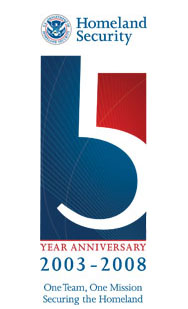Plum Island Animal Disease Center
Plum Island Animal Disease Center (PIADC) has been protecting America’s agriculture from foreign animal disease for more than 50 years.
- In June 2003, operational responsibility for PIADC transferred from the U.S. Department of Agriculture (USDA) to the U.S. Department of Homeland Security.
- Since 1954, PIADC has been conducting research, including vaccine development, for foot-and-mouth disease (FMD) and other exotic diseases of livestock.
- FMD is extremely contagious among cloven-hoofed animals, and accidental outbreaks of the virus have caused catastrophic livestock and economic losses in many countries throughout the world. The 2001 FMD outbreak in the United Kingdom is an example of the devastation FMD can bring.
Primary Research Areas
At Plum Island Animal Disease Center (PIADC), the Department of Homeland Security and USDA work together in this crucial mission. Research programs at PIADC include:
- The Targeted Advanced Development (TAD) unit partners with USDA, academia and industry scientists to deliver lead vaccine and antiviral candidates to the USDA Animal and Plant Health Inspection Service for eventual licensure and inclusion in the USDA National Veterinary Vaccine Stockpile. The Disease Threat and Assessment/Forensics (DTA&F) unit operates a bioforensics laboratory as a “spoke” activity off of the National Bioforensics Analysis Center--the “hub laboratory in Frederick, MD. DTA&F obtains epidemiologic information on the foot-and-mouth disease virus and other high-priority foreign animal agents.
- USDA Animal and Plant Health Inspection Services (APHIS): APHIS scientists operate the Foreign Animal Disease Diagnostic Laboratory, an internationally recognized laboratory performing diagnostic testing of samples collected from U.S. livestock with clinical signs suggestive of an exotic disease. APHIS tests animal products and live animals being imported into the U.S. to ensure that unwanted diseases are not accidentally introduced through importation. APHIS also maintains the North American Foot and Mouth Disease Vaccine Bank at PIADC. In addition, APHIS hosts the Foreign Animal Disease Diagnosticians training program, offering several classes per year to train state, federal, and academic veterinarians and veterinary pathologists to recognize foreign animal diseases.
- USDA Agricultural Research Service (ARS): ARS scientists perform both basic and applied research to better formulate our countermeasures against foreign animal diseases, including strategies for prevention, control and recovery from foreign animal diseases. ARS focuses on developing faster-acting, safe vaccines and antivirals to be used during outbreaks to limit or stop transmission. Antivirals prevent infection while vaccine immunity develops. ARS also conducts research to better understand the animal-pathogen interaction. The principal diseases studied are FMD, classical swine fever and vesicular stomatitis virus.
About the Facility
Plum Island Animal Disease Center operates as a Biosafety Level 3 Agriculture (BSL- 3Ag), BSL-3 and BSL -2 laboratory facility.
More About Plum Island Animal Disease Center >>
This page was last modified on December 28, 2007


